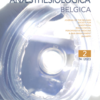Right ventricular-pulmonary arterial coupling in patients with COVID-19: A systematic review and meta-analysis
COVID-19, Ventricular Dysfunction, Right, Hypertension, Pulmonary, Echocardiography, Pulmonary artery
Published online: Jun 30 2023
Abstract
Objectives: In this systematic review and meta-analysis, we assessed the association between right ventricular-pulmonary arterial (RV-PA) coupling and mortality in coronavirus disease 2019 (COVID-19).
Methods: We performed a systematic literature search using MEDLINE (PubMed), Embase, Cochrane and Web of Science. We only included observational studies and randomized controlled trials in which, right ventricular function and pulmonary pressures were investigated, in adult patients with COVID-19. The primary outcome was mortality. The secondary outcome was pulmonary embolism (PE). Random-effects meta-analysis was performed. Mean differences (MD) and unadjusted hazard ratios (HRs) were pooled.
Results: 21 studies were included in our systematic review for qualitative analysis, and eight of them qualified for quantitative analysis. Tricuspid annular plane systolic excursion (TAPSE) over pulmonary artery systolic pressure (PASP) (TAPSE/PASP) ratio was significantly lower in non-survivors compared with survivors (mean difference = – 0.28 [–0.38, –0.17], p < 0.00001; I2: 61%, p < 0.08). TAPSE was significantly lower in non- survivors compared with survivors (mean difference = – 3.53 [–4.72, –2.33], p < 0.00001; I2: 77%, p < 0.0005). Lower TAPSE was associated with increased mortality (HR = 0.77 [0.63, 0.94], p < 0.010; I2: 77%, p = 0.01). PASP was significantly higher in non-survivors compared with survivors (mean difference = 9.14 [6.67, 11.61], p < 0.00001; I2: 37%, p=0.18). One study demonstrated a higher risk of mortality for lower TAPSE/PASP in both intensive care unit (ICU) and non-ICU patients and, one study showed that TAPSE/PASP was significantly associated with a higher risk of PE.
Conclusion: COVID-19 non-survivors have a significantly worse RV-PA coupling as compared to survivors.
